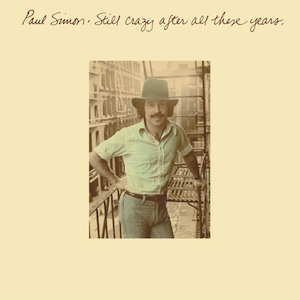It took a concert in tribute to Ahmet Ertegun for the unthinkable to happen: a live reunion of Led Zeppelin. Despite the teasers over the years—Live Aid, the hideous Atlantic Records 40th Anniversary performance, the Rock & Roll Hall of Fame induction—this was the first and, most likely, only time the surviving members played a full set since John Bonham’s death.
Perhaps not to compete with Robert Plant’s solo career, then riding high on his Alison Krauss collaboration, it only took five years to prepare the release of Celebration Day—which sadly, doesn’t include a performance of the song of that title—on CD, DVD and Blu-Ray. The audio version only includes a few edits of dialogue; some overdubbing supposedly took place, and there is a ProTools credit in the booklet, but considering all the mistakes Jimmy left in, it’s hard to call foul. Most of the songs are taken down a full step to accommodate Robert’s voice, so while they do sound different, they still sound like them—particularly when he goes for one of those high notes and hits it. Besides, it’s not like he’d been sitting in a box since the last Page/Plant tour, as the moderate success and general quality of his albums since then have shown.
Beginning appropriately with “Good Times Bad Times”, the band plows through the tune, Jason Bonham adding a few backing vocals here and there. “Ramble On” follows, a song never played in its entirety by the band before, and here incorporating a quote from “What Is And What Should Never Be” at the end. The solo intro to “Black Dog” gets a huge roar from the crowd, as does Plant’s “good evening” at the end. “In My Time Of Dying” is played to nearly the length of the album version, right down to the “oh my Jesus” pleas, starting low and gaining power. Another surprise comes with “For Your Life”, never played live either. “Trampled Under Foot” and “Nobody’s Fault But Mine” continue the blues trawl, and “No Quarter” turns the spotlight somewhat to John Paul Jones, the quietest, most patient and musically accomplished band member—the glue, if you will.
“Since I’ve Been Loving You” gets a good reading, followed by a nicely experimental “Dazed And Confused”, complete with violin bow. Probably because they couldn’t get away without doing it, the doubleneck is strapped on for a somewhat restrained “Stairway To Heaven” (thankfully, the audience is not asked if they remember laughter) and stays for “The Song Remains The Same”. A nod to Jason Bonham leads into “Misty Mountain Hop”, and “Kashmir” is reclaimed from Puff Daddy, though we kinda wish they’d used a real Mellotron. The first encore is “Whole Lotta Love”, then thanks and appreciation for Ahmet set up “Rock And Roll”, one of their simplest songs, but probably the one “obvious” one they’d yet to do. There’s an excellent tease at the end to set up that final drum solo.
It’s a great finish, because throughout the two-hour show, Jason Bonham pounds away. He was, after all, the biggest Zeppelin fan on that stage, having studied his dad’s technique through the albums and bootlegs, and a long way from the mulleted lout that surfaced in the hair metal era. He’d played in previous Zep reunions, but this was the first time he did a complete show, and he’s flawless. As is obvious from the film, the other three adore the kid.
Anybody who’s into the show might as well spring for the video, as it includes some of the inter-song chat cut out of the CD version. Jones hasn’t aged a day, Plant should have tied his hair back, and Page stopped dyeing his (Paul McCartney, take note), looking like a wizened master. Because they played so well—and it’s an occasion highly unlikely to happen again—Celebration Day is a worthy bookend to the Zeppelin saga. They played as well as ever, with no gimmicks; just fingers, feet, arms and voice.
Led Zeppelin Celebration Day (2012)—4
:format(jpeg):mode_rgb():quality(90)/discogs-images/R-1535305-1394987956-7896.jpeg.jpg)






